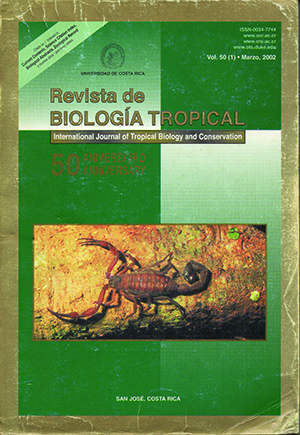Abstract
Lichens are increasingly used worldwide as air quality biomonitors because they are efficient, easy and cheap, but validation studies of the methodology are scarce. Three foliose lichen biomonitoring methods were compared by field tests (in the tropical urban habitat of San José, Costa Rica) and laboratory simulations: (1) the 100 uniform squares template traditionally used in North America, (2) the European 200 uniform points template and (3) a new computer-generated random points template (10 X 20 cm) in two versions: 100 points and 50 points. Repeated measurement by the same observer causes a variation of 2-14% and the templates’ error is 0.2-11%. We recommend the 100 random point template (applied to four sides of trunk) for ecological studies and the 50 random points template (applied to side with greatest lichen cover) for biomonitoring because it reduces time and costs by nearly 50% but still has acceptable reliability values.
##plugins.facebook.comentarios##

This work is licensed under a Creative Commons Attribution 4.0 International License.
Copyright (c) 2002 Revista de Biología Tropical
Downloads
Download data is not yet available.


